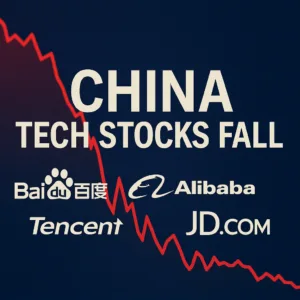China is preparing to introduce new guidelines aimed at promoting the use of open-source RISC-V chips across the country, according to a Reuters report on March 4, 2025. This initiative is part of Beijing’s broader strategy to reduce reliance on Western semiconductor technology, especially as tensions with the United States over chip exports continue to grow.
What Are RISC-V Chips?
RISC-V is an open-source chip architecture, meaning companies can use, modify, and develop it without paying expensive licensing fees. Unlike proprietary chip designs like x86 (used by Intel and AMD) or Arm (from Arm Holdings), RISC-V offers a cost-effective and customizable alternative. It can be adapted for various applications, including smartphones, artificial intelligence, and supercomputers.
China’s New Plan for RISC-V
The upcoming guidelines are being developed by eight Chinese government agencies, including the Cyberspace Administration of China and the Ministry of Industry and Information Technology. Although an exact release date is unclear, sources suggest the plan could be rolled out as early as March 2025.
This move highlights China’s growing interest in RISC-V, despite the technology not being a major policy focus in the past. Leading Chinese tech companies, such as Alibaba and startups like Nuclei System Technology, are already investing in RISC-V, making it a key part of China’s semiconductor strategy.
Why Is China Shifting to RISC-V Now?
The decision comes amid rising tensions between Beijing and Washington. The U.S. has imposed strict export restrictions on advanced semiconductor technology to slow China’s progress, making it harder for Chinese firms to access cutting-edge chips. In response, China is turning to open-source solutions like RISC-V, which are not controlled by any single country.
However, this shift has raised concerns among some U.S. lawmakers. They worry that American companies working on RISC-V could unintentionally help China strengthen its military and technological capabilities. Some policymakers have even suggested imposing limits on U.S. participation in RISC-V projects.
Benefits for China
China’s move to RISC-V offers several advantages:
Lower Costs: Since RISC-V is open-source, companies don’t have to pay licensing fees.
Customization: Businesses can modify the chips to suit their specific needs.
Technological Independence: By reducing reliance on Western companies, China can avoid disruptions caused by sanctions or trade restrictions.
With both major corporations and smaller startups embracing RISC-V, China hopes to strengthen its domestic semiconductor industry while reducing its vulnerability to U.S. policies.
What’s Next?
If China proceeds with its RISC-V guidelines as planned, it could reshape the global chip market. For decades, companies like Intel, AMD, and Arm Holdings have dominated the industry. But with China investing heavily in open-source chips, the balance of power could shift.
The world is now watching closely. Will China’s RISC-V strategy succeed? And how will the U.S. and other Western nations respond? As Beijing rolls out its policies, the future of semiconductor technology may be about to change.
Bringing you the latest updates on finance, economies, stocks, bonds, and more. Stay informed with timely insights.












[…] China Pushes Open-Source RISC-V Chips to Reduce Dependence on Western TechnologyAlibaba’s Hong Kong Shares Surge as New AI Model Challenges DeepSeekbigbreakingwire […]
[…] RISC-V is an open-source chip architecture, offering a cost-effective and flexible alternative to proprietary designs. Unlike Intel’s x86 and Arm Holdings’ chips, RISC-V allows companies to customize and develop processors without paying hefty licensing fees. […]